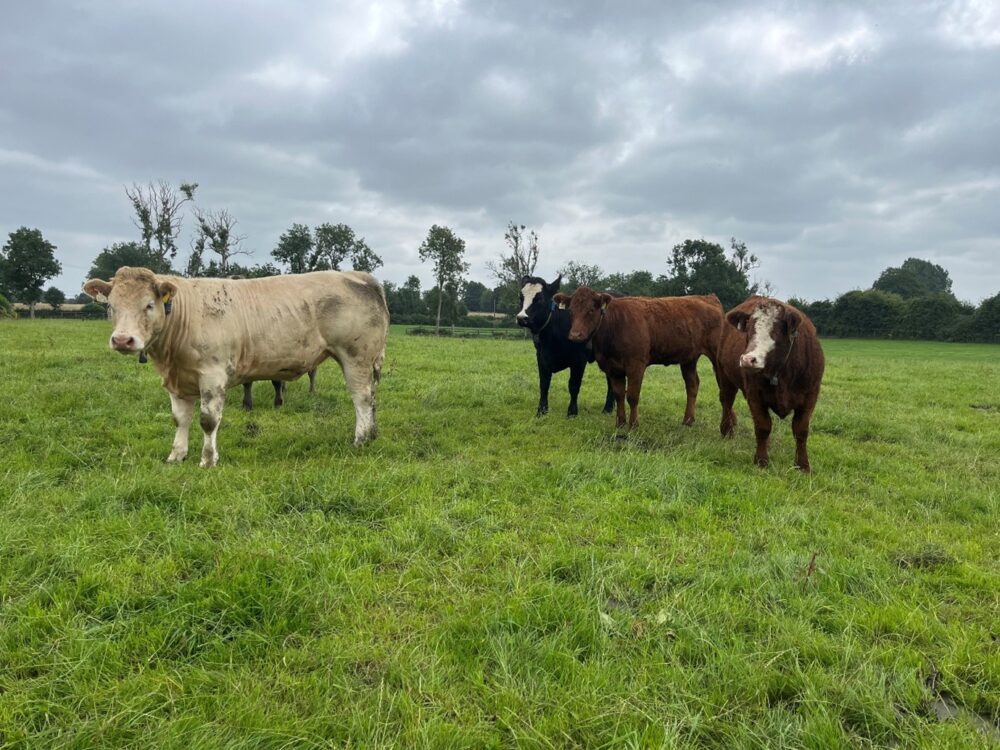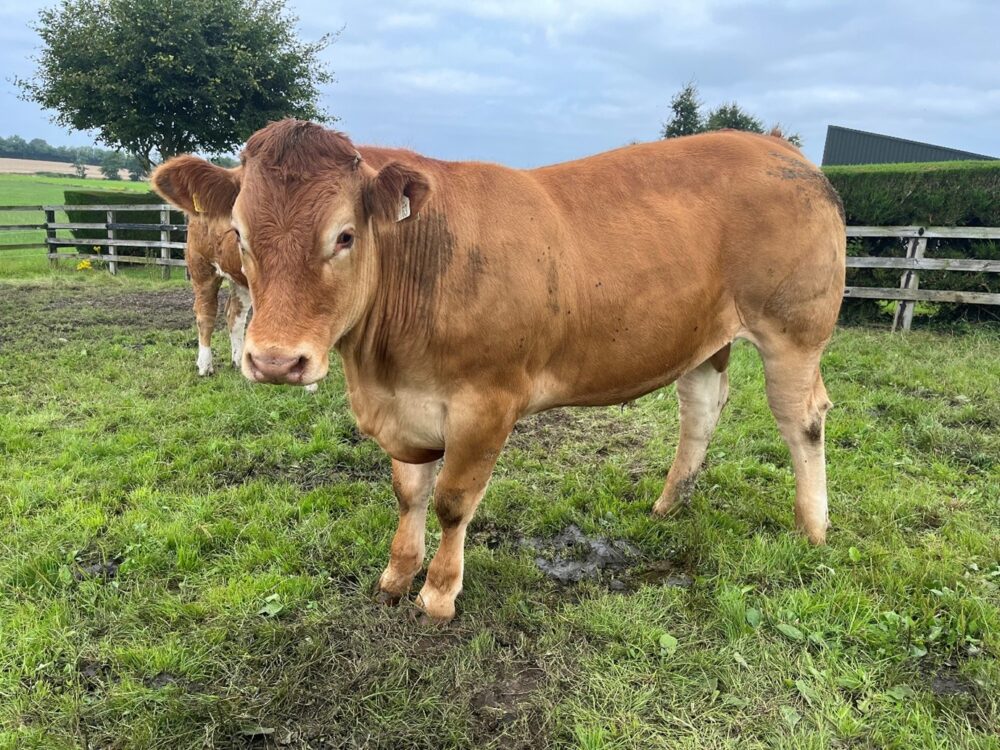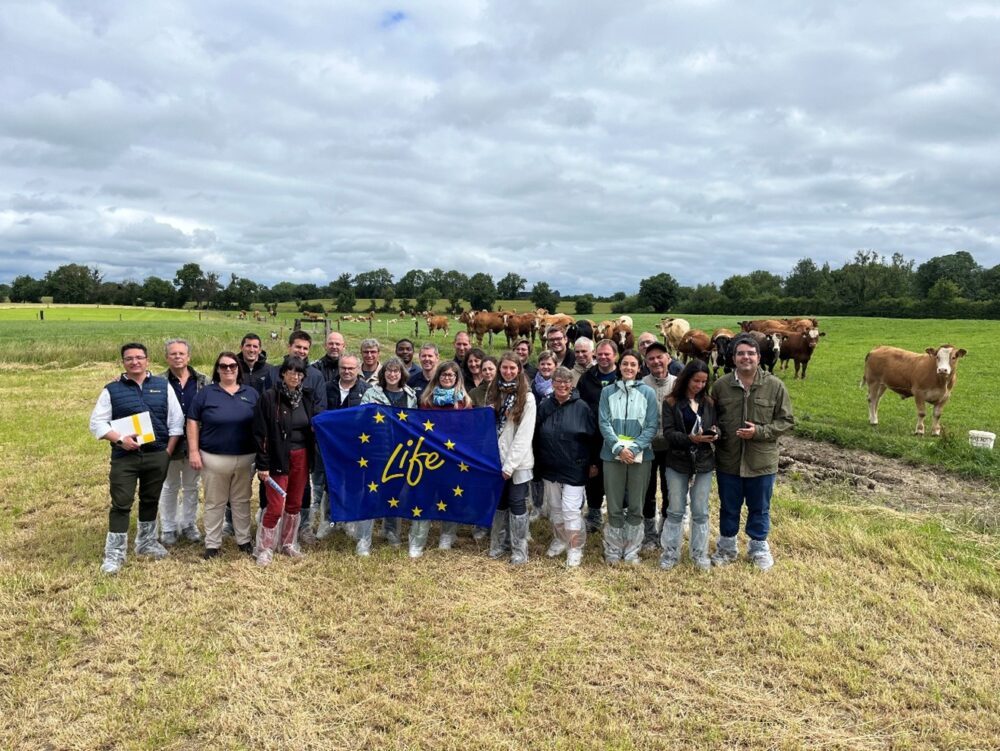Breeding
Michael’s breeding season started on 11th April and ended on 26th July (15 weeks in total). Twelve heifers and 24 cows have been bred in total. 17 of these were AI’d a second time, and a further 6 of these were AI’d for a third time. Although one heifer hurt her leg which set her back, Michael has been disappointed with the high number of repeats. He was quick to synchronise any cows that were slow to come cycling after calving or late calvers. 12 cows were synchronised in total and Michael expects that 5 of these held to the first served (42%), whereas he would have expected 60% to hold in calf.
Two cows have been identified for culling that were not bred at all, due to a caesarean section and a prolapse.
The herd will be scanned in early September, at least 35 days after the last cow has been bred which would be after 30th August. Last year 10 out of 32 cows turned up empty at scanning time (31% empty rate), but Michael was hoping that this year there would be better results. His target was to have over 27 cows in calf.
Blood samples have been taken from 4 cows and 4 heifers to identify if there are any mineral deficiencies in the herd. The calves, store cattle and cows are given coseicure boluses once per year, which was based on low levels of copper and iodine in previous blood samples back in October 2023. The cows got theirs in mid-March. The soil pH ranges from 6.3 to 7.5 across the farm so there is concern that this may locking up essential minerals in the cattle.

Figure 1: Some of this year’s breeding heifers
Performance
The 2024 born store cattle were weighed on 24th July. The heifers (12) averaged 543kg and gained 0.6kg/day since 3rd June. They have averaged 0.88kg/day since birth.
The bullocks averaged 629 kg and gained 0.75 kg/day since 3rd June. They have averaged 0.98 kg/day since birth.
Michael plans to start feeding them 3kg of rolled barley per head/day in August for 6 weeks before sale. His aim is to get the heifers to over 600kg and the bullocks to over 680kg. The cattle are ranging from 1 month to 2.5 months away from finishing. He hasn’t decided whether to sell them live or directly to the factory so will assess his options and the prices in the meantime, but he is very happy with their performance to date.

Figure 2: Bullock #163 weighed 716kg on 24th July
Some of the 2025 born calves were weighed on 7th June. The ICBF weaning performance report shows that the predicted 200 day weights for the heifers is 298kg (well ahead of the 250kg target) and the bulls are 33kg (ahead of the 300kg target). The lowest weight gain is a heifer calf from a first calver that still gained 1.06 kg /day, and the highest is 1.61kg/day from a fourth lactation cow.

Figure 3: Calf performance form ICBF weaning performance report (Source: ICBF)
The average cow weight is 734kg and the weaning efficiency figure (calf 200 day weight as a percentage of the cow’s weight) is 43%, which is above the target 42%.
Greenhouse Gas Emissions
Michael hosted a group of delegates from the Life Carbon Conference on 25th June. They travelled from France, Italy, Belgium, Germany and Spain to attend the 3 day event.
Michael discussed a number of actions that he is taking to reduce the carbon footprint on his farm such as:
- Calving at 2 years of age
- Maximising cheap weight gain off grass and targeting a lifetime average daily gain from birth of 1kg/day while stock are on the farm
- Improving soil fertility & oversowing white clover to reduce nitrogen usage on the farm
- Growing red clover to reduce nitrogen usage and maximise silage quality
- Installing >1km of new hedgerows to help sequester carbon, reduce nutrient runoff to the river and to provide shelter and shade to the cattle
His carbon footprint figure for 2024 was 11.9 kg CO2 eq/kg beef. The Life Carbon project shows that he has 2.6% space for nature, nourishes 136 people from the farm and sequesters 12t of carbon per year through grassland on the farm.

Figure 4: Delegates at the Life Carbon Conference pictured on Michael’s farm
